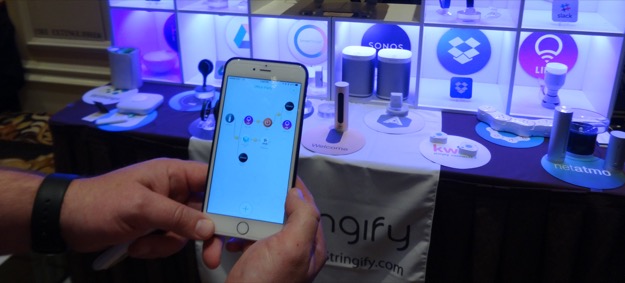
The home automation space is a fragmented mix of apps, platforms, gateways and products, not unlike the video content business. Comcast just purchased Stringify, a meta-platform that talks to dozens of other platforms, aggregates hundreds of products and services, and delivers them to a single smartphone app. Not unlike a cable company.
Stringify was my pick for most likely to disrupt the home automation business at the 2016 Consumer Electronics Show. Funded by a $6.3 million seed funding round, led by ARTIS Ventures, it’s ripened to the point where it’s ready for harvest. That’s a good job all around.
The big question will be whether home automation companies will continue to be as friendly to Comcast as they have been to Stringify. Its cloud-to-cloud communication depends on access to application programming interfaces (APIs) that are written and managed by each, individual platform. It’s one thing to support a wonky little app that makes it easier for your customers to do business with you. It’s quite another to feed Comcast’s [suck ’em dry and sell the skins]() approach to revenue maximisation, without also getting a cut of the money. And without some level of comfort that Comcast won’t try to capture their users and shift them to in-house products and platforms.
There’s nothing wrong with Comcast buying Stringify and using it to extend its channel aggregation and bundling business model to home automation. But it only has a right to try, not to succeed. Home automation manufacturers and platforms should take a hard look at how they can benefit from that model right now, and plan ahead.
The cable industry got its start by retransmitting other people’s content for free, a lesson Comcast seems to remember. Both TV stations and cable operators benefited because, in the early days, they weren’t fighting over each others’ revenue streams. But Comcast is already in the home automation space, and its competitors are now also its content suppliers. They’ll have to decide for themselves how to play this new game.
